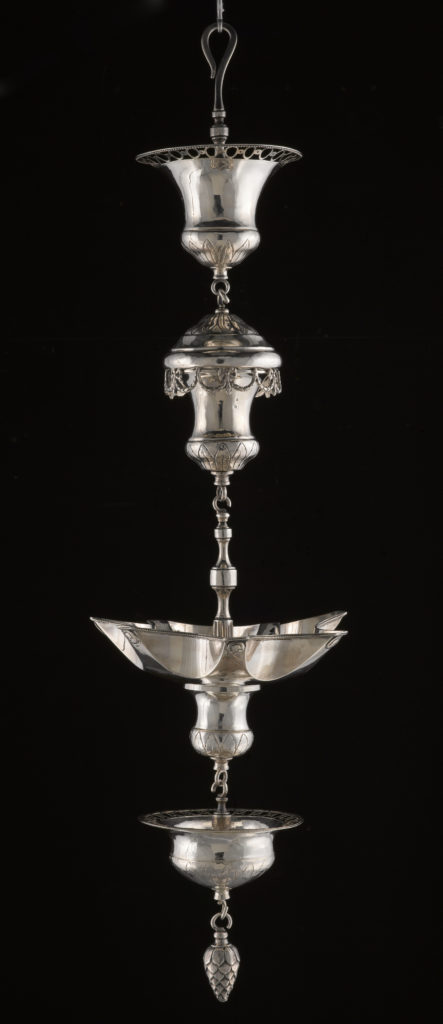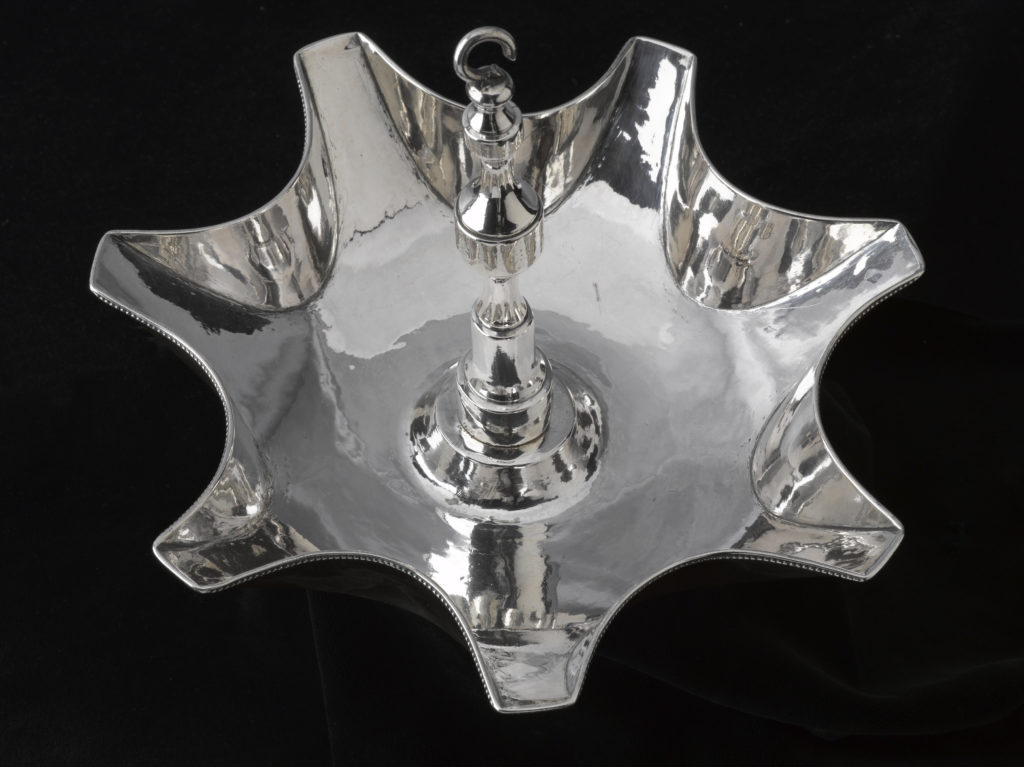Sabbath and Festival Lamp (work of art)
Artwork Info
Key Ideas about this Work of Art
- This large hanging lamp is similar to a modern-day chandelier. It is more than 3 1/2 feet tall.
- This lamp was buried in a cemetery in the Netherlands in 1940, to keep it safe during the war.
- The seven fluted points may represent the seven days of the week or the seven lights of a traditional menorah.
- There are three typical styles of European oil lamps: a German style that was also popular in France, a Dutch style that was common in England, and the Italian style.
Learn More
As late as the 1400s, most European homes were lit by oil lamps. A common type featured a suspended basin for the oil and wicks with a catch pan below, for catching dripping fuel. With the widespread availability of candles, oil lamps of this type disappeared from use except among more conservative Jewish communities who continued to use oil lamps in the ritual observance of the Sabbath and religious festivals. Jewish families continue the tradition of using candles to designate the beginning of the Sabbath and holidays on the evening prior, since days on the Hebrew calendar begin with the setting of the sun instead of at sunrise.
Like many other objects in the Judaic Art Gallery, this lamp has an eventful history. At the beginning of Nazi occupation of the Netherlands in 1940, the lamp’s owners buried it for safekeeping in a cemetery. Surviving family members retrieved it after the war and took it with them to Israel. More than 75% of Dutch Jewry (Jewish people collectively) died during the Holocaust. This included Anne Frank, a young Jewish Dutch teenager who left behind a diary that would be read by millions throughout the world.
Additional Resources
Resources for Teachers:
- Explore the history of Dutch Jewry.
- Read an article about the use of lights (candles, lamps, etc.) in religious and cultural settings.
- Read a tutorial on how to make a simple oil lamp using a tin can. This can be a fun classroom activity with proper supervision.
- Explore and share a picture book that features a hanging Shabbat oil lamp from the 1800s. (Recommended for children ages four to eight.)
Resources for Students:
- Explore a similar lamp and learn about the history and significance of Judenstern (Jewish Star) lamps.
- View a simple clay oil lamp that was made thousands of years before the Sabbath and Festival Lamp. How is it similar and how is it different? What does its design/form tell you about how it was used?
- Read an article about early clay and Roman-era lamps.


